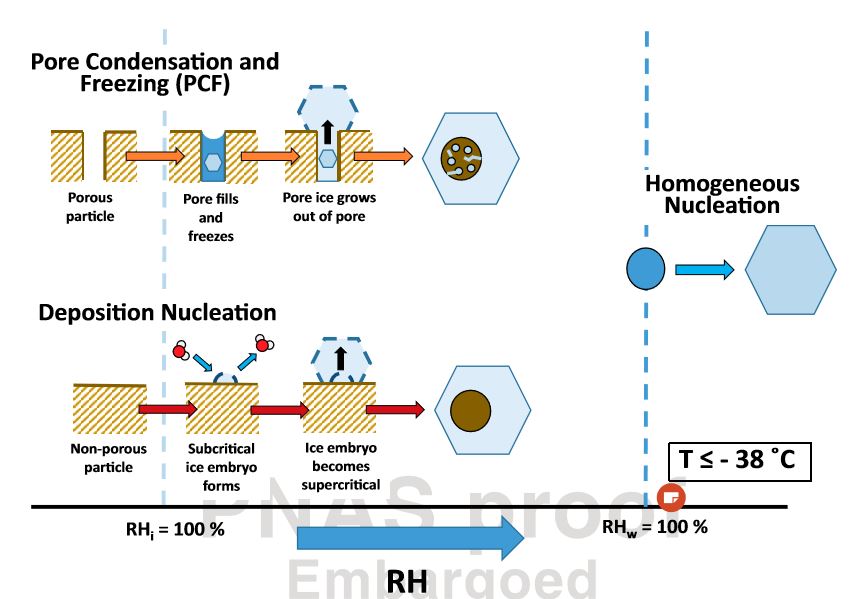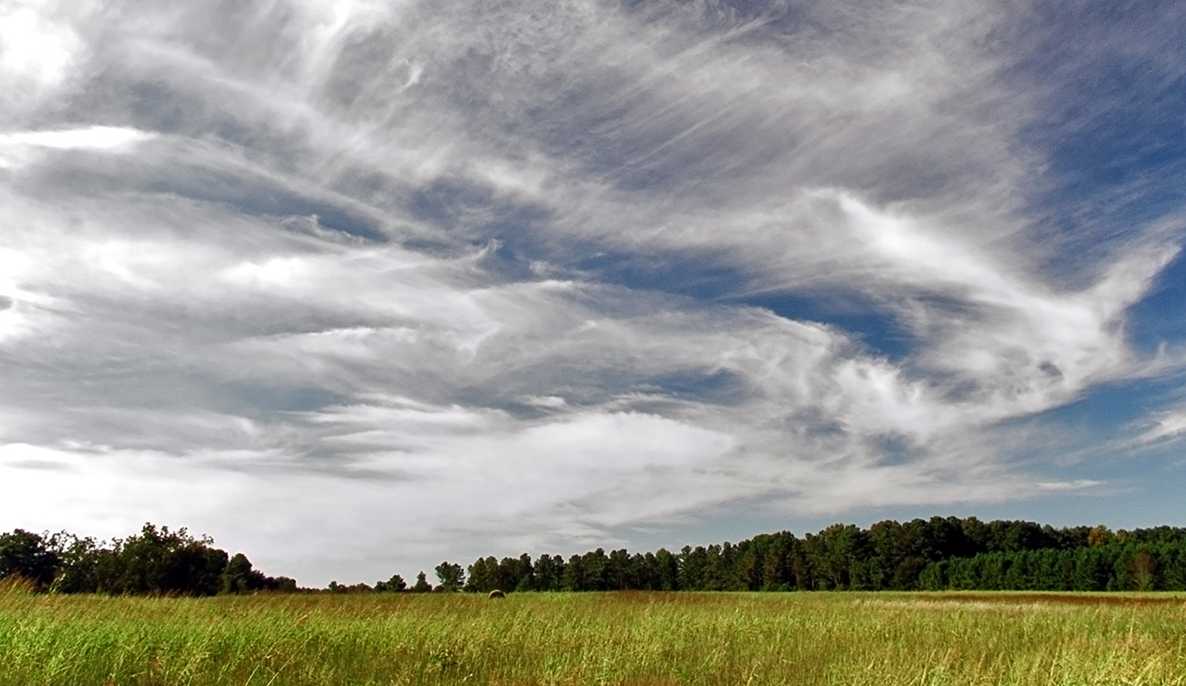New understanding of how ice forms in cirrus clouds
- D-USYS
- Institute for Atmospheric and Climate Science
Cirrus clouds are pure ice clouds at high altitudes. They appear as bright white, delicate threads or narrow bands with a silky shimmer, the edges of which are usually frayed by the high winds. A research team led by Zamin Kanji and Claudia Marcolli has investigated how exactly the ice forms in these clouds.
Cirrus clouds, wispy high-altitude threads of ice, are important components of the climate system. They regulate the amount of heat radiation emitted by Earth into space, so it makes sense to include cirrus clouds in global climate models. That requires a good understanding of how the clouds form. The doctoral thesis of Robert David, led by Zamin Kanji and Claudia Marcolli of the Institute of Atmosphere and Climate (IAC) found that the previously thought mechanism for ice formation in humid but unsaturated conditions (like those in which cirrus clouds form) has to be understood in a new way.
Existing explanatory model inadequate
Researchers previously assumed that the nucleation process, when the air wasn’t humid enough to be saturated with water, occurred as water vapor molecules formed together directly into ice, with no liquid water step in between. But that explanation doesn’t fit with observations and molecular models, according to researchers from ETH Zürich, the University of Utah and the Zürich University of Applied Sciences in Wädenswil.

In the atmosphere, ice forms on specks of dust and other materials in a process called nucleation. A clue to the true process comes from the fact that particles with pores – like mini-sponges – form ice particles with much higher efficiency than particles without pores. This led the research team to suspect that water vapor may condense in the tiny pores and that the ice crystals start growing from liquid water – not in vapor.
Pore condensation and freezing
In experiments including molecular simulations and experiments with synthesized porous particles, the team concluded that their hypothesis was correct: Even when the air is not fully saturated with water, vapor can condense in small particle pores and help nucleate ice crystals. The process may be active in other cloud formation processes as well, the authors write, making the process called Pore Condensation and Freezing a newly important factor in understanding the formation of cold clouds and their impact on climate.
Reference
David RO, Marcolli C, Fahrni J, Qiu Y, Perez Sirkinc YA, Molinero V, Mahrt F, Brühwiler D, Lohmann U, Kanji Z: Pore Condensation and Freezing is Responsible for Ice Formation below Water Saturation for Porous Particles. PNAS (2019), April 2019, doi: external page 10.1073/pnas.1813647116
Personal profiles of Zamin A. Kanji and Claudia Marcolli
